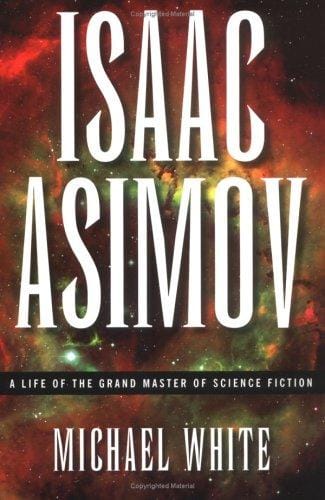Exploring Philip K. Dick’s “Do Androids Dream of Electric Sheep?”
A deep dive into Philip K. Dick’s classic “Do Androids Dream of Electric Sheep?”—plot, themes, and modern relevance in roughly 800 words.

Introduction to a Cyber-Punk Classic
When Philip K. Dick published “Do Androids Dream of Electric Sheep?” in 1968, he delivered more than a gripping science-fiction tale; he offered a philosophical mirror in which late-20th-century anxieties about technology, identity, and empathy were vividly reflected. Today, more than five decades later, the novel remains a touchstone for readers who crave speculative fiction with intellectual bite. Whether you discovered the story on the page or through its celebrated film adaptation, “Blade Runner,” revisiting the source material reveals layers of meaning that still feel startlingly contemporary.
Plot Overview: Deckard’s Desolate San Francisco
The novel unfolds in a post-apocalyptic 2021—an Earth scarred by nuclear fallout and mass extinction. Rick Deckard, a bounty hunter employed by the San Francisco Police Department, is tasked with “retiring” rogue Nexus-6 androids who have escaped from off-world colonies. Deckard’s goal seems straightforward: eliminate six andys, collect a sizable bounty, and buy a real live animal to replace his electric sheep. Yet each encounter nudges him closer to uncomfortable questions about what it really means to be human.
The Allure of Real Animals
In the novel’s radiation-soaked aftermath, owning authentic animals signals status and moral worth. Citizens carefully tend to robotic livestock to keep up appearances, creating a consumerist culture where empathy is marketable. Deckard’s longing for genuine companionship blurs the line between emotional craving and social obligation, underlining Dick’s critique of post-war materialism.
Major Themes that Still Resonate
Humanity vs. Artificiality
At the heart of the narrative lies an ontological riddle: can humanity be measured? The novel proposes the Voigt-Kampff test—a series of empathy-triggering questions designed to distinguish humans from androids. Yet as Deckard’s fatigue deepens, the test begins to look like a flimsy yardstick. By the end, distinctions erode, leaving readers to wrestle with the notion that empathy is perhaps not a uniquely human trait after all.
Empathy and Moral Relativism
Dick’s future society places empathy on a pedestal yet embraces institutionalized violence against androids. The contrast exposes a moral relativism that remains pertinent in today’s debates over AI ethics. Are we genuinely compassionate, or do we merely perform compassion when it serves our interests? The uneasy answers make the book a powerful conversation starter in classrooms and think tanks alike.
Religion and the Quest for Meaning
The Mercerism faith, a collective virtual-reality experience, unites characters in shared suffering. Its authenticity is dubious, but its psychological impact is undeniable—echoing modern concerns about digital echo chambers, social media rituals, and the human hunger for belonging.
From Page to Screen: The Birth of “Blade Runner”
Ridley Scott’s 1982 film “Blade Runner” transformed Dick’s vision into neon-drenched noir. While the movie keeps the basic premise, it trades the novel’s preoccupation with animals and empathy tests for atmospheric cityscapes and existential voice-overs. Understanding these deviations helps fans appreciate each work on its own creative terms. The book offers a quieter, more intimate exploration of inner turmoil, whereas the film foregrounds urban alienation and visual spectacle.
Key Differences Worth Noting
• Time period: The novel’s crumbling, empty San Francisco contrasts with the film’s bustling Los Angeles.
• Characters: The novel features Deckard’s wife Iran, whose depression opens windows into emotion-regulating technology seldom explored in the movie.
• Themes: The obsession with live animals—a sharp commentary on consumer ethics—is largely absent from the film adaptation.
Literary Techniques: Why Dick’s Prose Endures
Philip K. Dick was renowned for his economical yet evocative style. In “Do Androids Dream of Electric Sheep?” he deploys clipped dialogue and internal monologue to create a disorienting sense of doubt—mirroring Deckard’s shaky confidence in moral absolutes. The novel’s quick shifts between mundane tasks and metaphysical dread keep readers unsettled, a deliberate strategy that magnifies thematic weight.
Cultural Impact and Modern Relevancy
Artificial intelligence has surged from speculative fringe to everyday reality, making Dick’s questions timelier than ever. Tech giants now wrestle with AI bias and ethical frameworks, while philosophers debate machine consciousness. By dramatizing the perils of projecting human values onto synthetic beings, the novel feels like an urgent parable for 21st-century technologists and policymakers.
Influence on Cyber-Punk and Beyond
The book’s fusion of hardboiled detective tropes with high-tech dread laid groundwork for the cyber-punk genre, inspiring authors from William Gibson to Neal Stephenson. Its moral ambiguity resonates in recent works like the “Westworld” series and video games such as “Detroit: Become Human,” proving its blueprint status in narrative explorations of AI and identity.
Reading Tips for First-Time Explorers
1. Pay attention to animal symbolism; every creature, real or synthetic, reveals character motivations.
2. Keep track of empathy references; Dick sprinkles subtle clues that challenge surface judgments.
3. Compare your reactions to android and human characters—your discomfort tells you as much about yourself as it does about the narrative.
Conclusion: Why You Should Read It Now
“Do Androids Dream of Electric Sheep?” is far more than the progenitor of a cult-favorite movie; it is a meditation on empathy, consumerism, and the fragile boundaries between creator and creation. As AI chatbots, driverless cars, and synthetic companions edge closer to the mainstream, Dick’s probing questions grow louder: What obligations do we owe beings who might feel? When does imitation cross the threshold into authenticity? The novel refuses to provide neat answers, but in that refusal lies its enduring genius.



